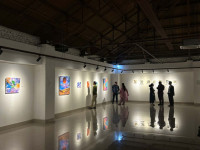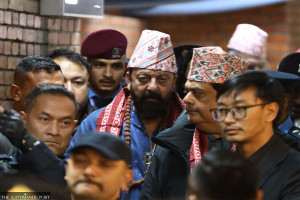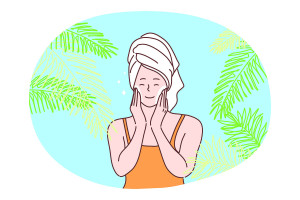Culture & Lifestyle
Against all odds
The mental health challenges of individuals with disabilities, which are a result of societal misconceptions and discrimination they face, are often neglected.
Aarati Ray
Samjhana Rijal, Sanjiya Shrestha, and Shantanu Sharma lead distinct lives, yet they share a common challenge—facing mistreatment and barriers due to society’s misconceptions about disability.
Rijal, who is blind and is a member of Chain For Change (CFC), a youth-led NGO working to ensure social inclusion and active participation of people with and without disabilities, notes, “Disability is often viewed as a problem, and if someone with disabilities grapples with mental health issues, it’s seen as a result of the person’s weakness.”

She stresses that mistreatment and biases, not the disability itself, can make a person susceptible to mental illness. Recounting a personal experience, she says, “Once, I was told not to use my white cane. For a blind person, a white cane is like a body organ. How can someone be asked not to use a part of their body?”
Similarly, Sharma, a freelance writer, mental health advocate, and motivational speaker, also reveals he has faced discrimination and stereotypes. About eight years ago, he fell backwards from a height of 30 feet, which left him with a broken spine, ribs and right femur. His left hip was also dislocated. While his broken bones healed with time, his spinal cord is permanently injured.
“After my injury, I had not only mental issues but also physical ones as I was paralysed. Whenever I go outside, people around me start to look and whisper. I have learned to handle it now, but you can imagine how uncomfortable it can be under those judgmental eyes,” shares Sharma. He also highlights the accessibility problem with materials and infrastructure, “How can the government expect one to come forward and share their problems when the path to the office and office premise itself is inaccessible?”

According to the 2021 census, 2.2 percent of the population in Nepal is disabled, with various categories including physical, low vision, blind, deaf, hard of hearing, speech impairment, psycho-social disability, and intellectual disabilities.
Dr Prathama Raghavan, a mental health and disability professional in Kathmandu, states, “People with disabilities face structural and ideological challenges that have little to do with their actual limitations. I consider disability as natural human diversity.”
When asked if people with disabilities are more vulnerable to mental illness, Dr Raghavan says they aren’t more prone to mental illness. Still, they are vulnerable to experiencing more distress due to being looked at differently and discriminated against. “People’s perception of what one can do and cannot is so dependent on the norms of being able-bodied that they don’t expect individuals with disabilities to be capable,” she says, adding that these perceptions can affect one’s mind as the way we see ourselves is influenced by the people around us.

Shrestha, who is a visually impaired mental health counsellor and sexual and reproductive health and rights (SRHR) facilitator, shares her hospital experience, “During the checkup, the doctor was not talking to me. She was constantly asking my caretaker questions about what problem I was having. Such cases of health professionals linking physical or mental health issues directly to a disability or not communicating with patients are very common.” She further points out that there are not many mental health practitioners who specialise in disabilities, especially in smaller cities.
“Not everyone with a disability necessarily wants to discuss their disability in counselling. They want to talk about mental health stuff just like anyone else in counselling. You do not have to perceive them as only their disability. Still, you also have to understand the things that come in people’s lives because they are different or have a disability,” adds Dr Raghavan, challenging the prevailing perception in mental health practice and other sectors of limiting people because of their disability.
Shrestha says considering two critical factors—the type of disability based on ‘functional limitation’ and ‘severity’—the government and organisations should adopt inclusive policies addressing individual, family, and societal aspects for intervention.

“Challenging societal stereotypes on disability requires grassroots awareness. It’s crucial to integrate disability and mental health education into school curriculums,” observes Sharma. He also revealed that his life has changed a lot since his injury, and he has been focusing on healing himself and his mental health ever since. Sharma firmly believes in not letting psychological and physical conditions define a person. He says, “Don’t let it take over or give others that power.”
The experiences of Rijal, Shrestha, and Sharma echo the struggles of people with disabilities who are ‘victim-cum-warriors’. Thousands face discrimination and inaccessibility, yet they stand as pillars of encouragement and hope for one another. The question remains: when will this struggle end? Dr Raghavan says, “We must build an inclusive system and environment that accommodates all kinds of bodies and minds. It’s high time we recognise that the real issue lies not in disability but in people’s distorted perceptions.”




 16.25°C Kathmandu
16.25°C Kathmandu















